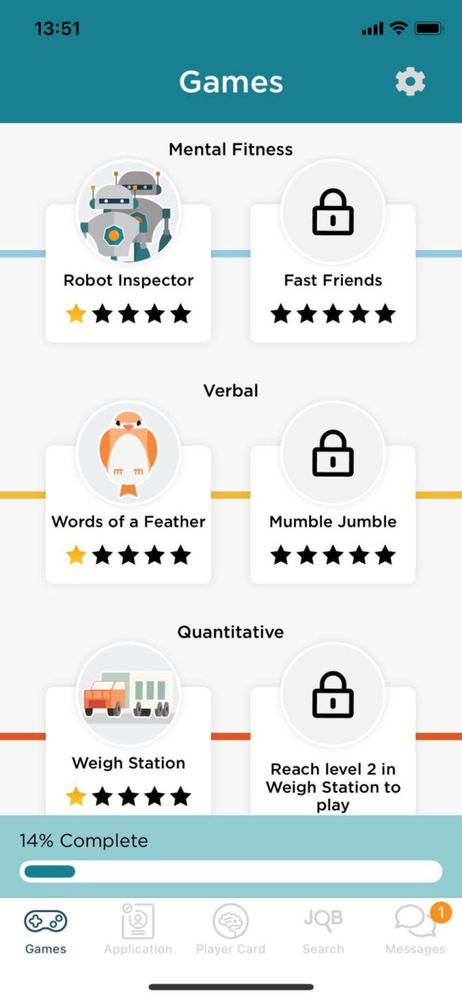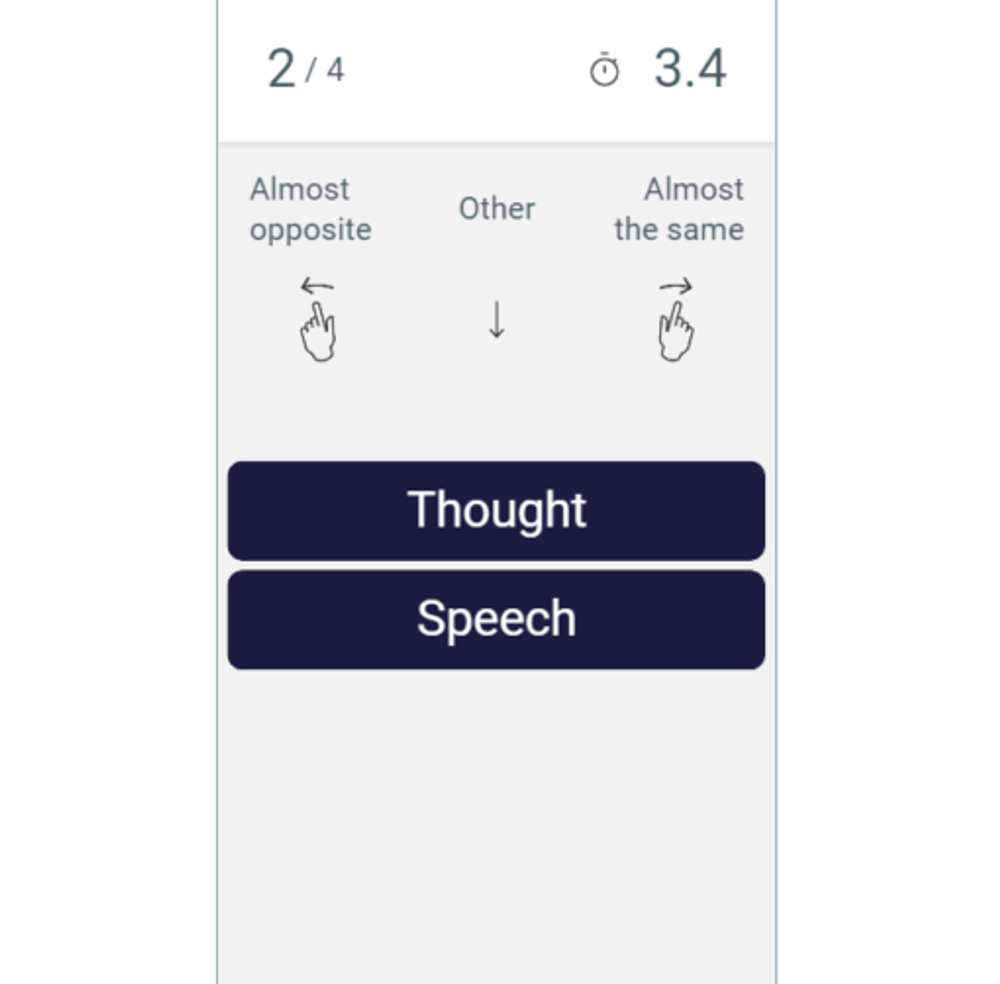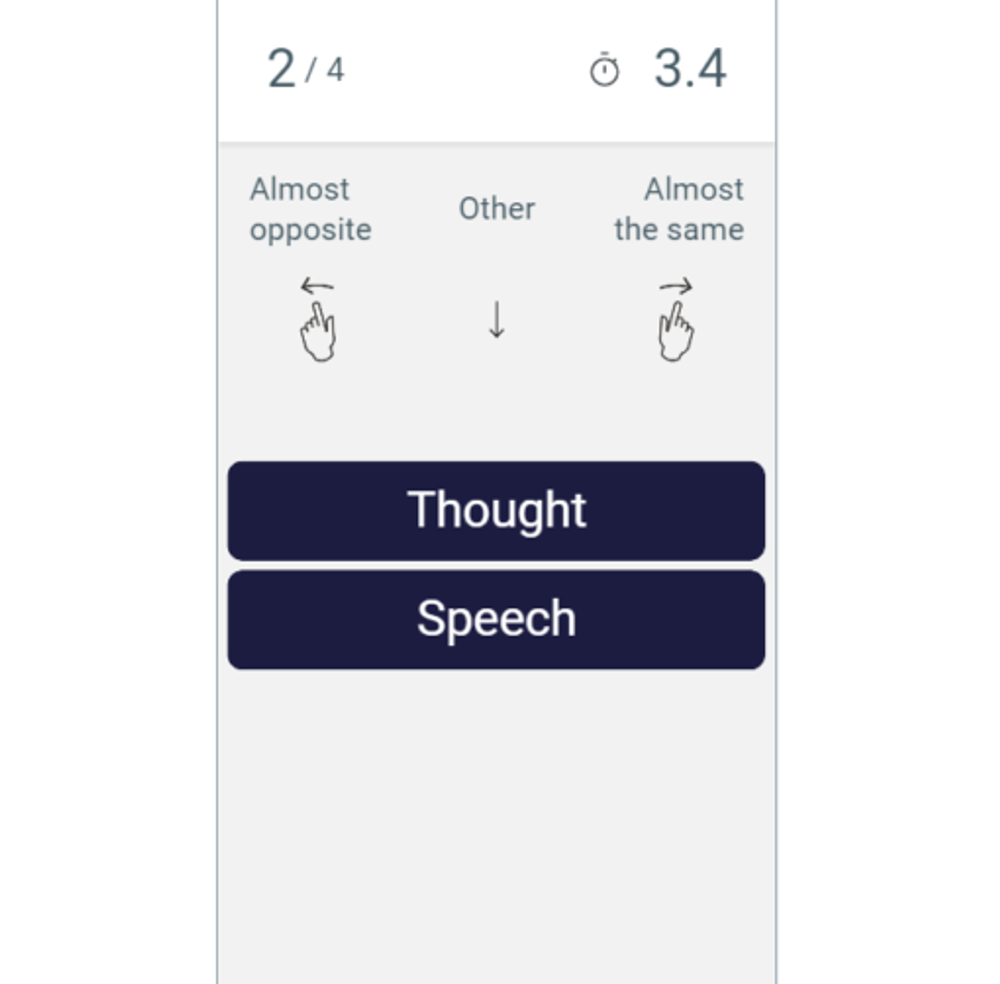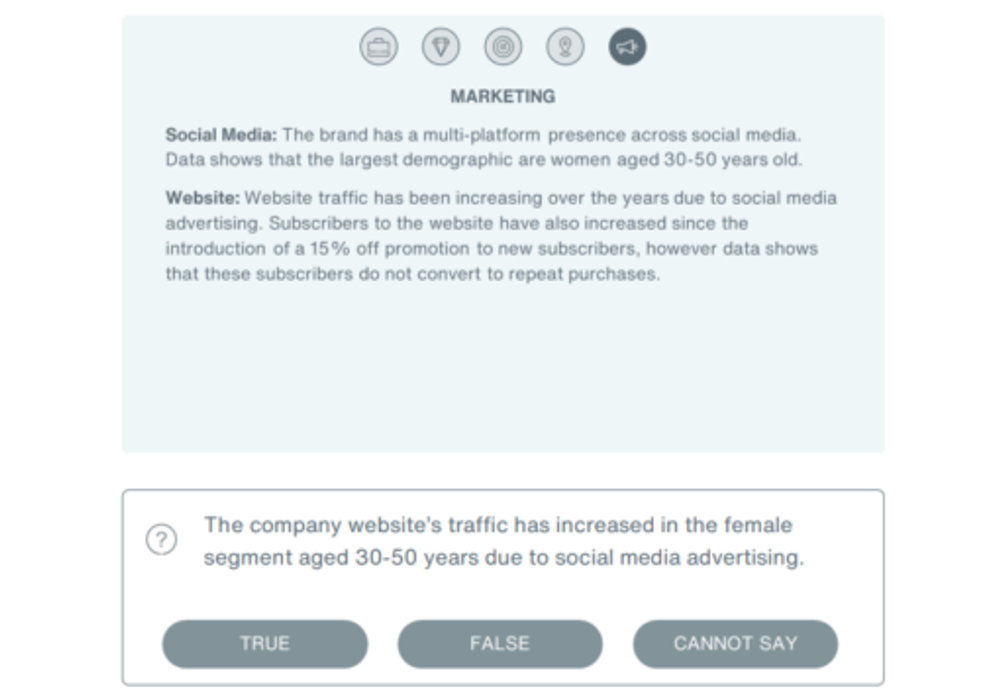In our blog “The Ultimate Guide to Verbal Reasoning Tests”, you may already understand everything involved in a verbal reasoning assessment and gain insights into question types, question examples, or popular test providers.
This article will bring you a bigger picture of verbal reasoning, discussing different topics in verbal reasoning so that test takers can prepare for anything that can arise in real verbal reasoning tests.

Table of Contents
Synonym / Antonym
The synonym / antonym topic is often included in verbal reasoning tests, requiring you to determine whether the given words are synonyms or antonyms.
Criteria Corp and TestPartnership are the two test providers including these synonym/antonym questions in their verbal reasoning tests. Especially these questions are in the form of a gamified assessment.
Criteria Corp has launched an app called JobFlare that is available on the App Store or Google Play. The app covers the synonym/anonym topic in the Words of a Feather game.

Source: JobFlare/ Criteria Corp
The game sets 90 seconds for users to practice a variety of synonym/antonym questions. Each question has 2 different words – your task is to decide whether they are the same or opposite.

Source: JobFlare/ Criteria Corp
Meanwhile, TestPartnership also offers a game called Link Swipe. You need to compare the two words and determine whether their meaning is almost the opposite, the same, or have another relationship.
Here’s an example of syllogism in Cubiks’s verbal reasoning test:

Source: TestPartnership
Each question in Link Swipe has a 6-second countdown timer at the upper right corner of the screen.

Source: TestPartnership
Analogy
Another topic in verbal reasoning tests is analogy. These questions require you to spot relationships between a few sets of words. They may cover different words and concept links but have the same structure:
- Part 1 gives an example of pairing that has a specific relationship.
- Part 2 presents a word – you need to identify its corresponding one depending on the relationship of the example.
Cubiks, Criteria Corp, and TestPartnership are the three test providers including the analogy topic in their verbal reasoning assessments. Here’s a typical example of an analogy question in verbal reasoning.

Source: Cubiks
As you can see, a train runs on a track, just as a car runs on a road. The right answer is Road.
Read more: What is a Verbal Analogy Test? (7 Common Word Bridges)
Syllogism (Deduction)
The syllogism topic is quite rare in verbal reasoning, often appearing in some advanced verbal reasoning tests. A syllogism is a three-part logical argument where two premises are used to draw a conclusion. In case the premises of the syllogism are true, and the syllogism is accurately structured, the conclusion will be true.
Here’s an example of a syllogism:
All mammals are animals
All lions are mammals.
Therefore, all lions are animals.
In a syllogism, the more general premise is the major premise “All mammals are animals”. The more specific premise is the minor premise “All lions are mammals”. The conclusion is a combination of the two premises “Therefore, all lions are animals”.
3 main types of syllogism include:
- Conditional syllogism
- Categorical syllogism
- Disjunctive syllogism
| Types of Syllogism | Definition | Examples |
|---|---|---|
| Conditional Syllogism | If A is true, then B is true. | A: Major premise: If Rachel eats fast food every day, she is putting herself at risk for obesity. B: Minor premise: Rachel does not like eating fast food every day. C: Conclusion: Therefore, Rachel does not put herself at risk for obesity. |
| Categorical Syllogism | If A is in C, then B is in C. | A: Major premise: All cars have wheels. B: Minor premise: Mike drives a car. C: Conclusion: Mike’s car has wheels |
| Disjunctive Syllogism | If A is true, then B is false | A: Major premise: Either the meeting is in the office or at home. B: Minor premise: The meeting is not in the office. C: Conclusion: Therefore the meeting is at home. |

Source: Cubiks
Answer: All laptops are electronics.
Explanation: This is a conditional syllogism.
Major premise: All computers are electronic.
Minor premise: All laptops are computers.
Conclusion: All laptops are electronics.
Verbal logical reasoning
The verbal logical reasoning topic will cover 2 types of questions: Reading Comprehension and Verbal Reasoning. These two types are also the most popular questions in verbal reasoning tests.
Reading comprehension requires you to read a passage of text quickly and identify information to answer the questions. Test takers often have 4-6 options to choose from. The difficulty of the reading comprehension questions varies based on many factors such as the length of text, number of options, language level, scanning requirements, number of correct answers, etc.
Here’s an example of reading comprehension:

Source: Cubiks
Answer: Increased competition in the market
Explanation: Look at the sentence, “…the costs associated with renewable energy have declined rapidly in recent years. This is due to advances in technology and increased competition in the market.”
That’s about reading comprehension. So what is verbal reasoning?
In verbal reasoning questions, users need to make inferences based on the information in the given passage, deciding whether the statement is True/ False/ Cannot Say compared to specific information in the text.
- True – The statement logically follows the given information within the text.
- False – The statement CANNOT follow the given information within the text.
- Cannot Say – It’s impossible to determine if the statement is true or false compared to the given information within the text.
Here’s an example of verbal reasoning:

Source: Aon (Cut-e)
Answer: Cannot Say
Explanation: The text says, “Website traffic has been increasing over the years due to social media advertising”. However, it does not mention why that might be the case.
The first passage mentions, “the largest demographic are women aged 30-50 years old”. That might make users believe this demographic must have increased – the statement is true. But the demographic relates to the social media presence, not website traffic.
Error checking
The error-checking topic in verbal reasoning measures the ability to find errors in sets of data or text. The typical error-checking questions will have 2 parts:
- Part 1: Original text
- Part 2: Altered text where some items are transposed or swapped with other parts of the original text.
Your task is to spot the statements that have been written accurately, the statements that have been modified, and the nature of the alternation.
The given text usually involves numerical and alphabetical characters, requiring a proper comparison of correct information along with an altered version of the original text.
Here’s an example of error checking:
Question: Are the items on the left transposed accurately? If not, point out the errors.
| Original | Transposed |
|---|---|
| BAPIEK65LOQW5 | BAKIEW65LOQW5 |
| WO78RPL4109NA | WO87RPS4109CA |
| 97DP5WKLBFE67 | 97DP5OILBFE54 |
Answer: This example is quite tricky because there are 1-3 alterations for each original item and it includes both alphabetical and numerical items. The errors are highlighted in red as follows:
| Original | Transposed |
|---|---|
| BAPIEK65LOQW5 | BAPIEK65LOQW5 |
| WO78RPL4109NA | WO78RPL4109NA |
| 97DP5WKLBFE67 | 97DP5WKLBFE67 |
/filters:quality(75)//case_thumb/public/1699589977462_aptitude_tests_package_4_x.png)